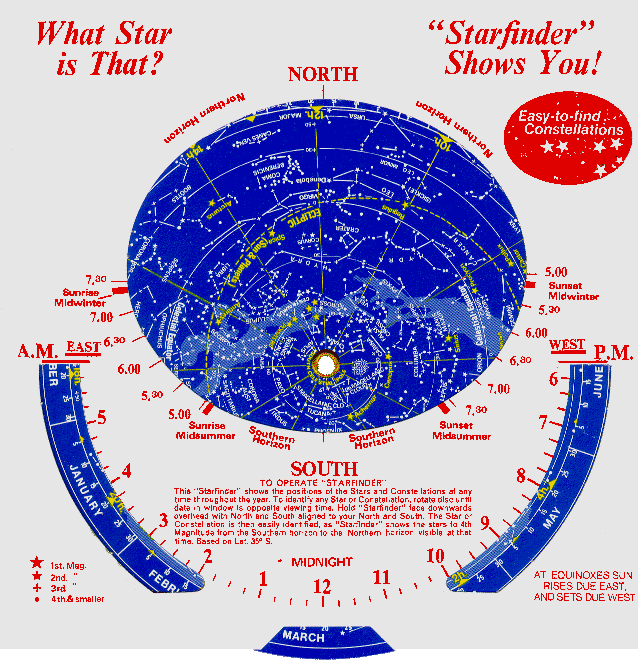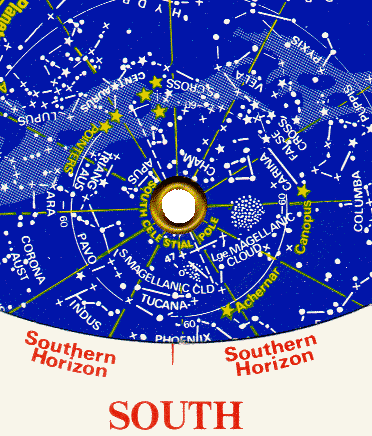

Above is a star finder designed for viewing from 35° S latitude, for example, in Perth, Adelaide, Melbourne, Sidney (Australia) or Auckland (New Zealand). On this Star Finder the eyelet is the south celestial pole (SCP), which is shown 35° above the southern horizon. (The north celestial pole is below the horizon in the southern hemisphere of the Earth.) As usual for maps looking up at the sky, east is on the left. The exact point of due east is not marked on the Star Finder, but if you look carefully you'll see the spot where the celestial equator hits the horizon, near the spot marked 6.00 (am). [Due west is near 6.45 pm on the right hand side.] The date/time is set for 6 am on the December solstice: the start of a summer day. The Sun (on the ecliptic) would be rising in the SE at the point marked Sunrise Midsummer at this moment. Alternatively this same alignment could be used for midnight on the March equinox or 6 pm on the June solstice (winter).
There is no special star near the SCP. The suggested way to find the SCP is
Find the South Celestial Pole by following an imaginary line in the sky between Achernar [in the river Eridanus] and a point halfway between the Southern Cross and the Pointers [
and
in Centaurus; this imaginary line is the white dashed line near the eyelet]. The SCP is halfway along this line and is right above due south on your horizon. Approximation for the SCP: Extend the Cross for 4½ times its length. [
-Cru has a declination of about -63°]

Notice also the Large Magellanic Cloud [LMC] and the Small Magellanic
Cloud [SMC] quite near the SCP. The large globular cluster 47 Tucanae
can be seen just to the left of the SMC. The famous
 Carinae nebula is the dot on the -60°
diurnal circle just below the S in "SCROSS". The dark Coal Sack nebula in
Crux is the huge island in the Milky Way just to the SE of the cross.
Carinae nebula is the dot on the -60°
diurnal circle just below the S in "SCROSS". The dark Coal Sack nebula in
Crux is the huge island in the Milky Way just to the SE of the cross.